You’ll discover that creating a pet-friendly balcony garden doesn’t mean sacrificing style or variety. Whether you have a curious cat or playful pup, these ten proven plants offer both beauty and safety for your outdoor space. From trailing spider plants that purify the air to aromatic herbs that enhance your cooking, each selection serves multiple purposes while keeping your furry companions protected. The first plant on our list transforms any balcony corner into a lush, pet-safe paradise.
Contents
- 1 Spider Plant: The Perfect Hanging Garden Companion
- 2 Pet-Safe Herbs: Basil, Mint, and Rosemary
- 3 Marigolds: Bright Blooms for Sunny Spots
- 4 Boston Ferns: Lush and Safe Greenery
- 5 Bamboo Palm: Tropical Shade for Small Spaces
- 6 African Violet: Colorful Indoor-Outdoor Choice
- 7 Butterfly Bush: Pollinator-Friendly and Pet-Safe
- 8 Swedish Ivy: Low-Maintenance Trailing Plant
- 9 Echeveria Succulents: Drought-Resistant Beauty
- 10 Catnip: A Feline-Friendly Balcony Addition
Spider Plant: The Perfect Hanging Garden Companion
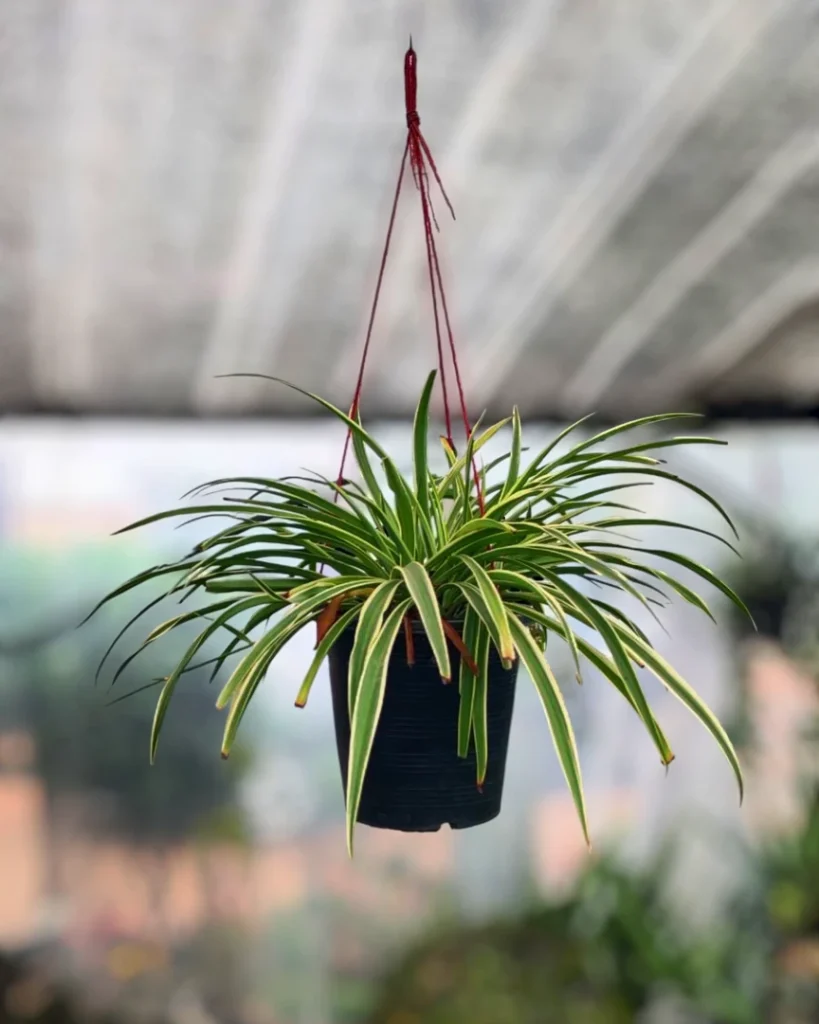
Spider Plants (Chlorophytum comosum) are graceful, arching plants that make excellent hanging companions for balcony gardens. Their long, slender leaves create cascading fountains of green and white variegated foliage, while their trailing stems produce baby plantlets that dangle like ornaments. These hardy plants are non-toxic to pets, making them a safe choice for households with curious cats or dogs, and they excel at purifying indoor air.
- Light: Bright, indirect sunlight; can tolerate partial shade but avoid direct sun which may scorch leaves
- Water: Keep soil moderately moist; water when top inch of soil feels dry; reduce watering in winter
- Soil: Well-draining potting mix with good aeration
- Temperature: 60-75°F (15-24°C)
- Humidity: Adaptable to average home humidity; misting occasionally beneficial
- Container: Hanging basket or elevated pot with drainage holes
- Fertilizer: Light feeding with balanced fertilizer every 2-3 months during growing season
Pet-Safe Herbs: Basil, Mint, and Rosemary
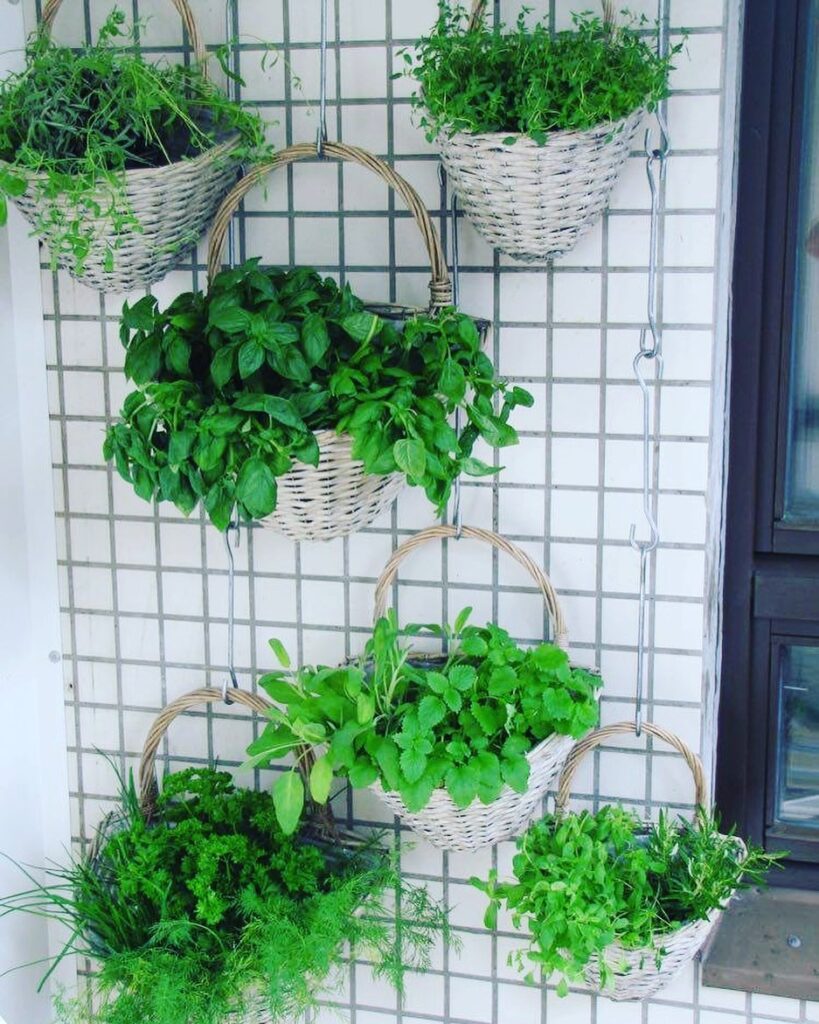
Basil, mint, and rosemary are excellent herb choices for pet owners, as they’re safe for cats and dogs while providing fresh flavors for cooking. These aromatic herbs not only create a pleasant atmosphere on your balcony but also serve dual purposes as both decorative and culinary plants. While mint grows vigorously and may need containment, basil and rosemary maintain more manageable growth patterns, making all three suitable for small spaces.
- Light: Full sun to partial shade (6-8 hours of direct sunlight daily)
- Water: Moderate watering; soil should be kept moist but not waterlogged
- Soil: Well-draining potting mix with organic matter
- Temperature: 65-85°F (18-29°C)
- Container: Pots with drainage holes; mint should be planted separately
- Fertilizer: Light feeding with balanced organic fertilizer every 4-6 weeks
- Pruning: Regular harvesting to encourage bushy growth
- Spacing: 12-18 inches between plants
- pH level: 6.0-7.0
- Air circulation: Good ventilation to prevent fungal issues
Marigolds: Bright Blooms for Sunny Spots
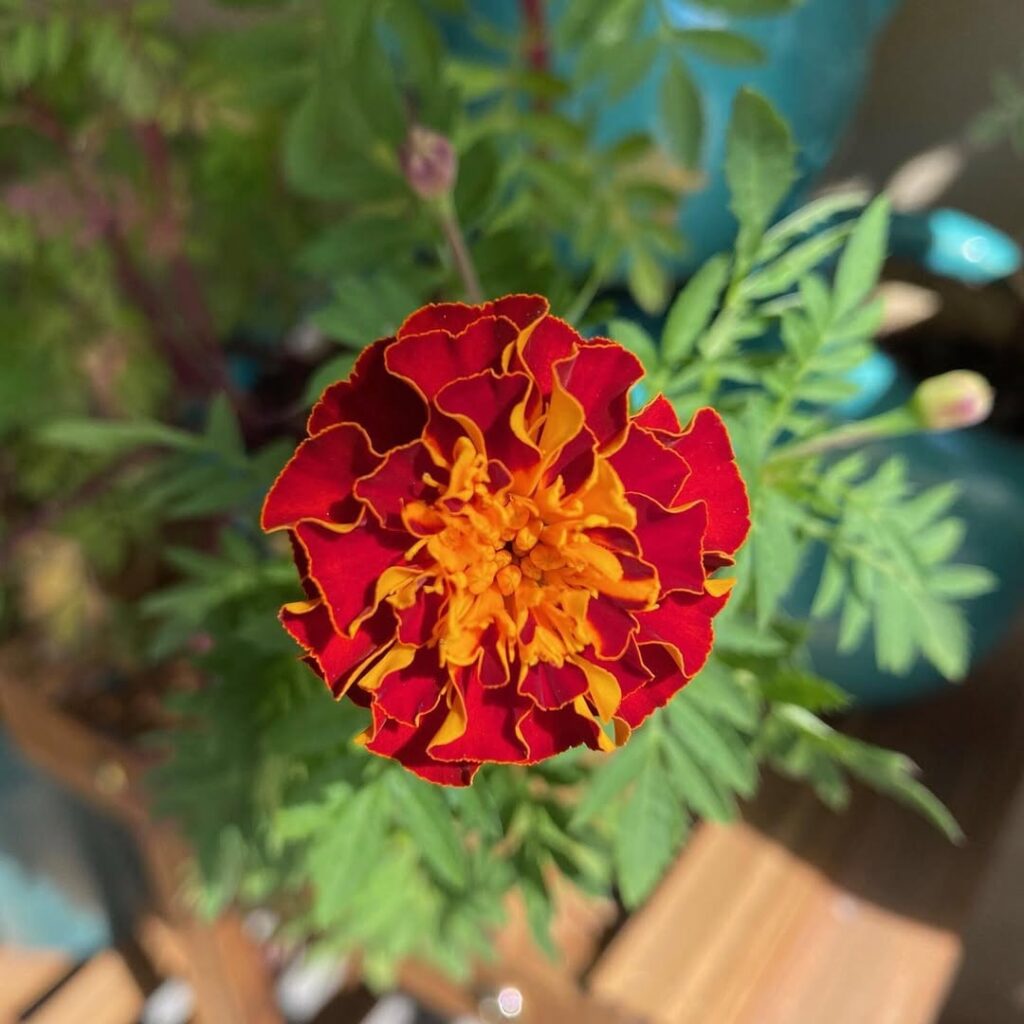
Marigolds are cheerful, pet-safe flowers that add vibrant splashes of orange, yellow, and red to balcony gardens. These compact, bushy plants produce abundant blooms from spring through fall, making them perfect for container growing in limited spaces. Their strong scent naturally repels many garden pests while attracting beneficial pollinators, and their flowers are edible, adding both ornamental and practical value to a small balcony garden.
- Light: Full sun (6-8 hours of direct sunlight daily)
- Water: Moderate; water when top inch of soil feels dry
- Soil: Well-draining potting mix with average fertility
- Temperature: 70-75°F (21-24°C) for ideal growth
- Container: 6-8 inch pots with drainage holes
- Spacing: 6-12 inches between plants
- Fertilizer: Monthly feeding with balanced fertilizer
- Maintenance: Regular deadheading to encourage continuous blooming
Boston Ferns: Lush and Safe Greenery
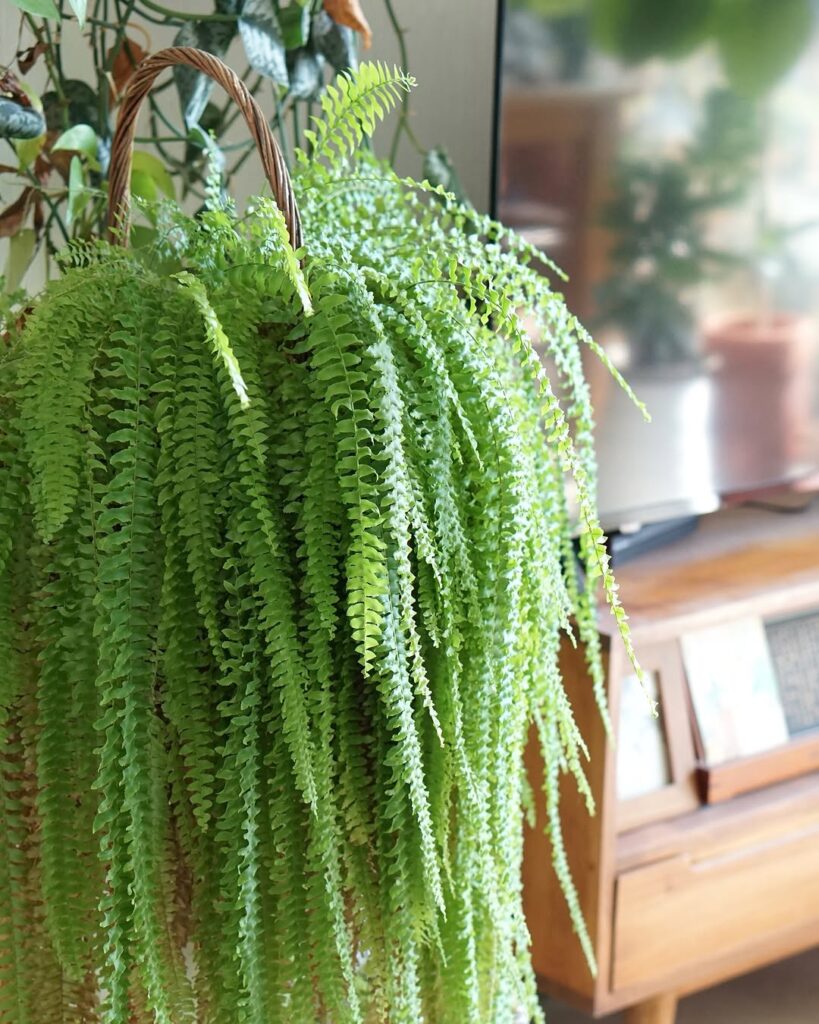
Boston Ferns are excellent pet-safe choices for balcony gardens, offering cascading fronds of rich green foliage that create a lush, tropical atmosphere. These classic hanging plants are non-toxic to cats and dogs, making them worry-free additions to pet households. Their full, arching fronds can grow up to 3 feet long, providing natural shade and beauty while being completely safe if curious pets decide to nibble on them.
- Light: Bright indirect light; avoid direct sun which can scorch leaves; morning sun is tolerable
- Water: Keep soil consistently moist but not waterlogged; mist regularly to maintain humidity
- Soil: Well-draining, rich potting mix with high organic content
- Temperature: 60-75°F (15-24°C); protect from cold drafts
- Humidity: High humidity required; use pebble trays or regular misting
- Fertilizer: Feed monthly during growing season with balanced liquid fertilizer
- Container: Use hanging baskets or elevated pots with good drainage
Bamboo Palm: Tropical Shade for Small Spaces
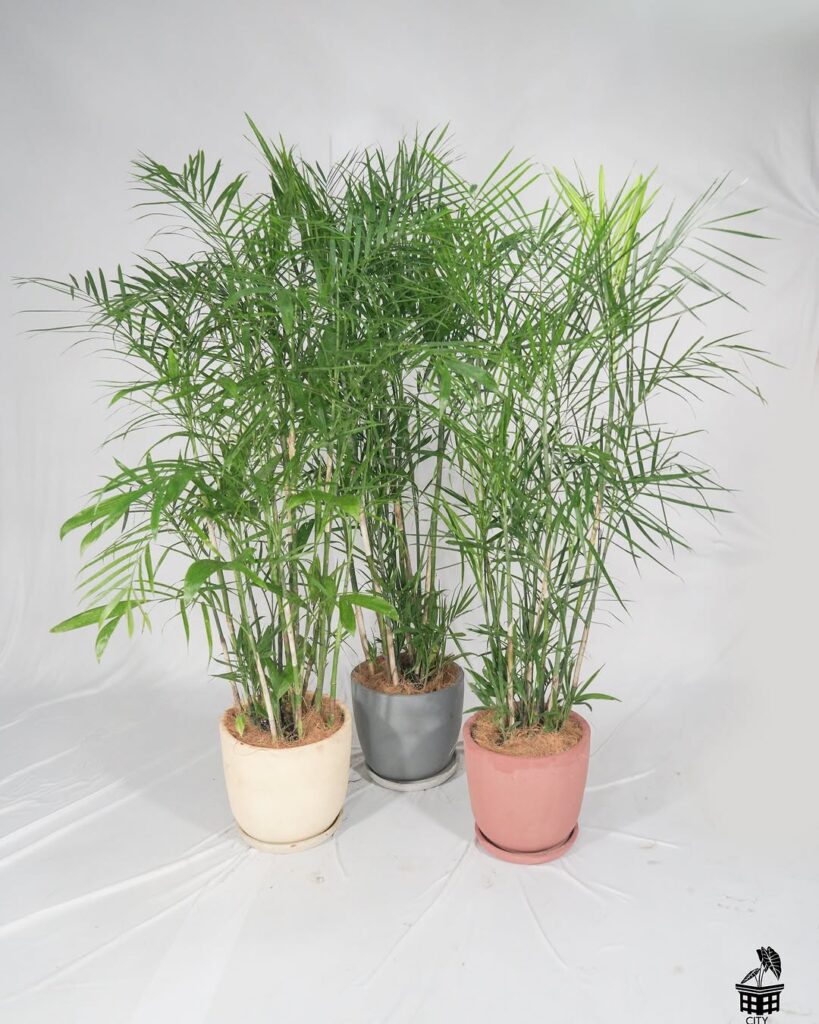
The Bamboo Palm (Chamaedorea seifrizii) is an elegant, pet-safe tropical plant that thrives in small balcony spaces. This compact palm variety typically grows 4-12 feet tall and features delicate, feathery fronds arranged on multiple reed-like stems, creating a lush, jungle-inspired aesthetic. Its natural air-purifying qualities and ability to adapt to container growing make it an excellent choice for urban balconies, while its non-toxic nature guarantees peace of mind for pet owners.
- Light: Bright indirect light to partial shade; protect from direct afternoon sun
- Water: Keep soil consistently moist but not waterlogged; water when top inch of soil feels dry
- Soil: Well-draining, rich potting mix with added organic matter
- Humidity: Prefers high humidity; benefits from regular misting
- Temperature: 65-80°F (18-27°C); protect from cold drafts
- Fertilizer: Feed monthly during growing season with balanced liquid fertilizer
- Container: Use pot with drainage holes; repot every 2-3 years
- Spacing: Allow 3-4 feet spread for mature plants
African Violet: Colorful Indoor-Outdoor Choice
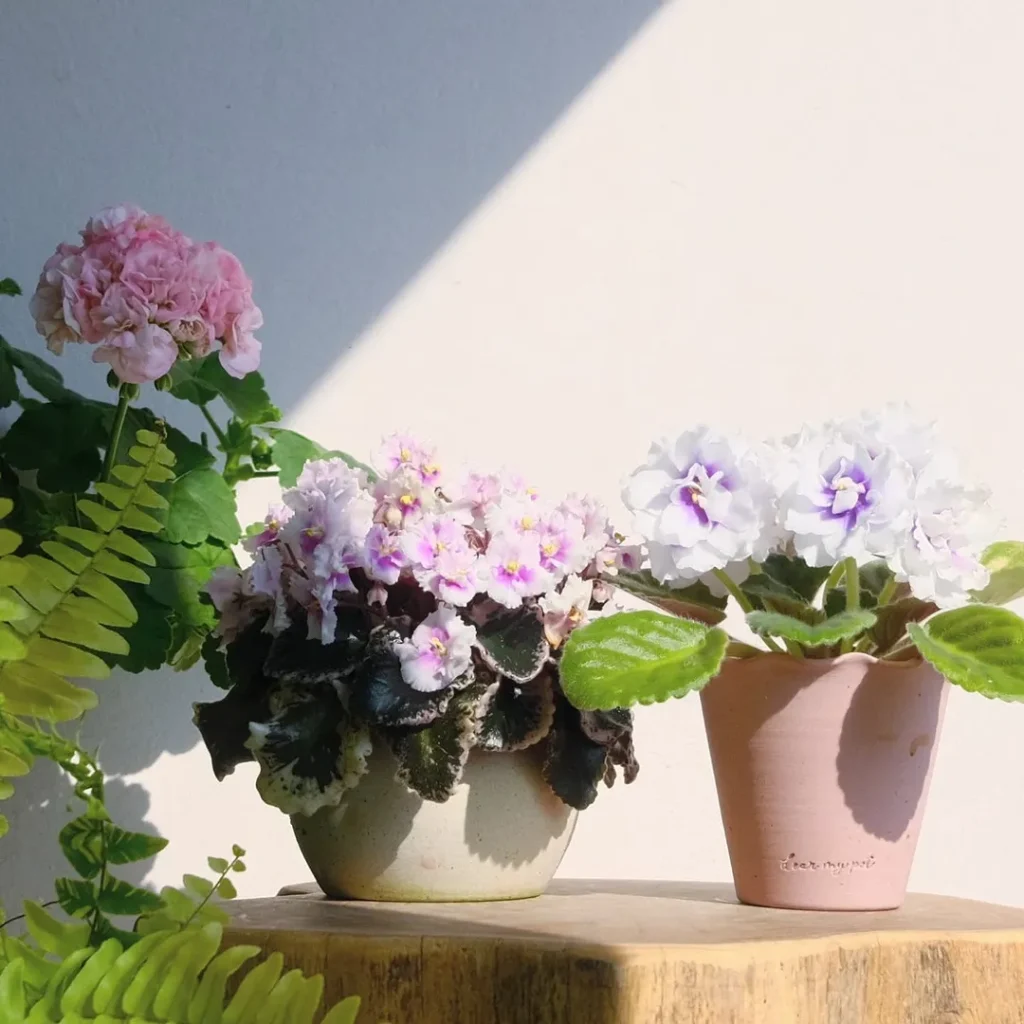
African Violet (Saintpaulia) is a compact, low-growing plant that produces clusters of vibrant purple, pink, or white flowers against dark green fuzzy leaves. Its small size and continuous blooming habit make it an excellent choice for both indoor and outdoor balcony spaces, provided it’s protected from direct rain and harsh elements. Pet owners can feel confident about this choice, as African Violets are non-toxic to cats and dogs.
- Light: Bright, indirect light; avoid direct sunlight; east or north-facing locations are ideal
- Water: Keep soil lightly moist but not waterlogged; water from bottom to avoid leaf damage
- Soil: Well-draining, slightly acidic African Violet potting mix
- Temperature: 65-75°F (18-24°C); protect from cold drafts
- Humidity: Moderate to high humidity; 50-60% is best
- Fertilizer: Feed every 2-4 weeks with balanced, water-soluble fertilizer during growing season
- Container: Small pots with drainage holes; prefer slightly root-bound conditions
Butterfly Bush: Pollinator-Friendly and Pet-Safe
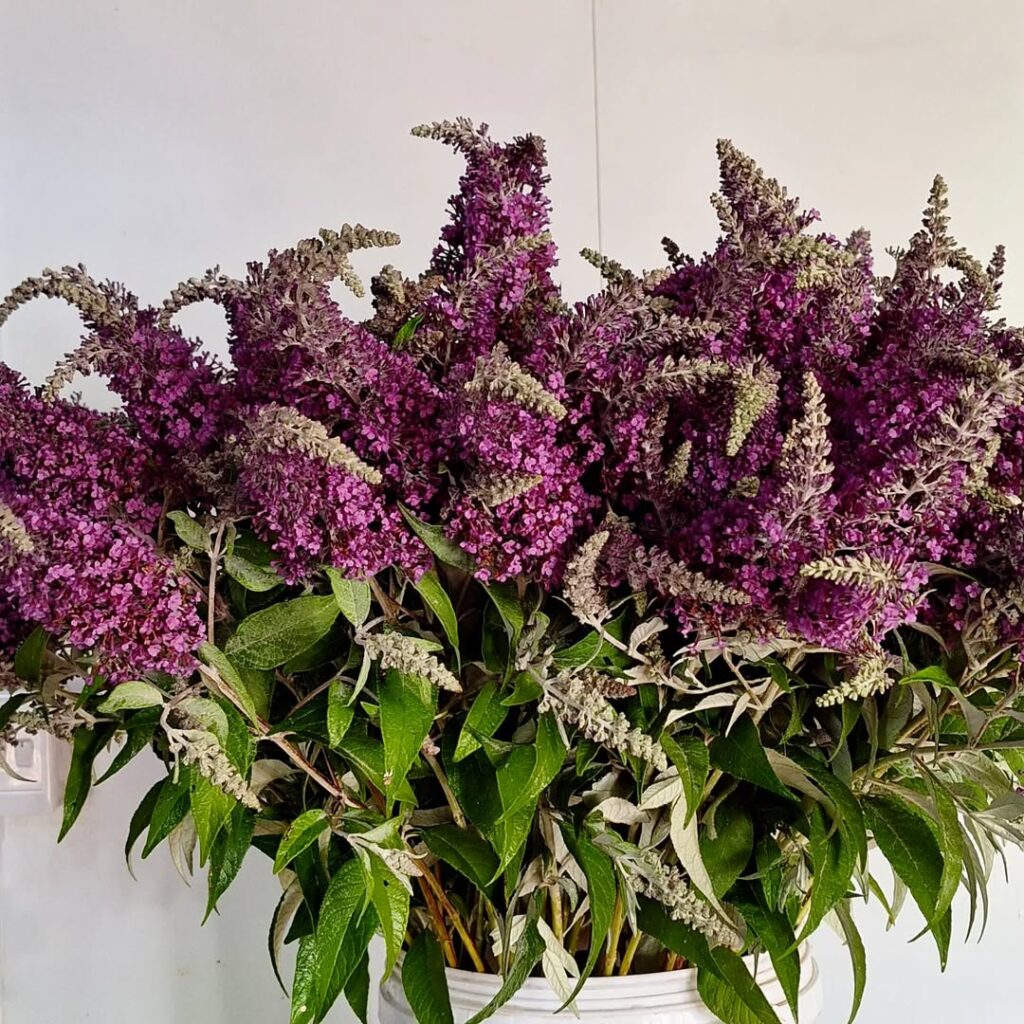
The Butterfly Bush (Buddleja davidii) is a pollinator-friendly shrub that’s safe for pets and perfect for small balconies. This compact plant produces clusters of nectar-rich, purple, pink, or white flowers that attract butterflies, bees, and hummingbirds throughout summer and fall. While traditional varieties can grow quite large, dwarf cultivars are available that stay manageable in containers, typically reaching heights of 2-3 feet, making them ideal for balcony gardens.
- Light: Full sun (6-8 hours daily)
- Water: Moderate; allow soil to dry slightly between waterings
- Soil: Well-draining, slightly acidic soil
- Temperature: Hardy in zones 5-10
- Container: Large pot with drainage holes
- Fertilizer: Light feeding during growing season
- Pruning: Cut back in early spring to promote bushier growth
- Spacing: 2-3 feet between plants
- pH Level: 6.0-7.0
- Winter Care: Protect from harsh winds in cold climates
Swedish Ivy: Low-Maintenance Trailing Plant
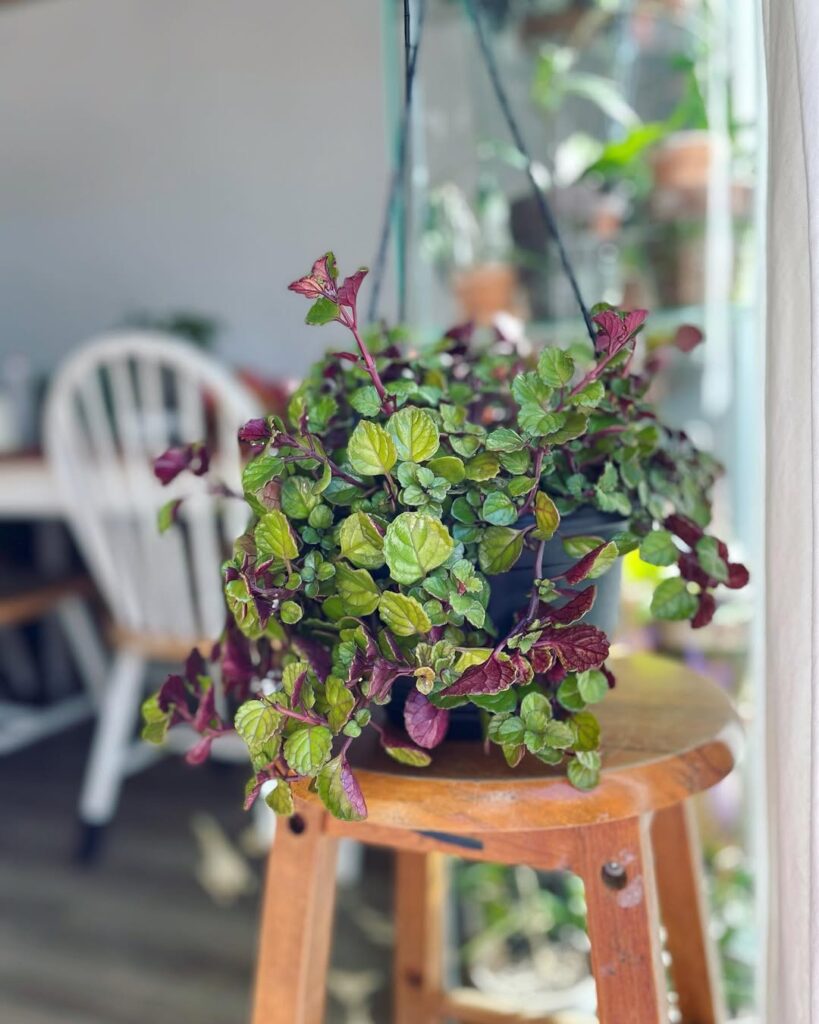
Swedish Ivy (Plectranthus verticillatus) is a trailing plant that’s perfectly safe for pets and ideal for small balconies. Despite its name, it’s neither Swedish nor a true ivy, but rather a member of the mint family native to South Africa. This easy-care plant features thick, glossy leaves with scalloped edges and produces cascading vines that can grow up to 2-3 feet long, making it excellent for hanging baskets or elevated containers. Its compact growth habit and adaptability to various conditions make it particularly suitable for balcony gardens.
- Light: Bright indirect light; can tolerate partial shade but avoid direct afternoon sun
- Water: Keep soil moderately moist; water when top inch of soil feels dry
- Soil: Well-draining potting mix with good organic content
- Temperature: 60-75°F (15-24°C); not frost-tolerant
- Humidity: Adaptable to average indoor humidity levels
- Fertilizer: Feed monthly with balanced liquid fertilizer during growing season
- Container: Use pots with drainage holes; ideal for hanging baskets
- Pruning: Pinch back regularly to encourage bushier growth
Echeveria Succulents: Drought-Resistant Beauty

Echeveria succulents are compact, rosette-forming plants known for their striking foliage and excellent drought tolerance, making them perfect for small balcony gardens. These hardy succulents typically grow to about 6 inches in height and width, featuring thick, fleshy leaves arranged in a symmetrical pattern. Their minimal maintenance requirements and resistance to harsh conditions make them an ideal choice for busy pet owners, as they’re also non-toxic to cats and dogs.
- Light: Full sun to partial shade; minimum 6 hours of direct sunlight daily
- Water: Allow soil to dry completely between waterings; reduce watering in winter
- Soil: Well-draining cactus or succulent mix
- Temperature: Tolerates 20-90°F (-6-32°C)
- Container: Shallow pot with drainage holes
- Humidity: Low to moderate; tolerates dry conditions well
- Fertilizer: Light feeding with balanced fertilizer during growing season only
Catnip: A Feline-Friendly Balcony Addition
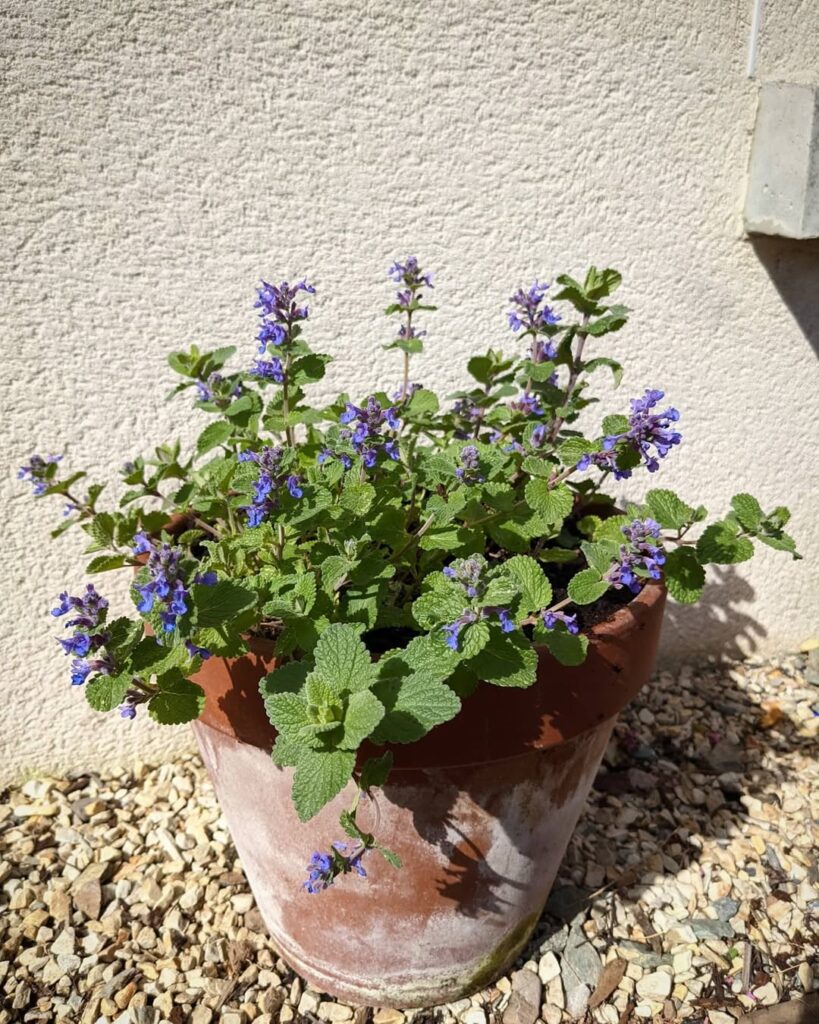
Catnip (Nepeta cataria) is a hardy perennial herb that delights both gardeners and their feline companions. This member of the mint family produces small lavender flowers and releases an aromatic oil that creates a euphoric effect in cats while remaining completely safe for them to consume. Growing 2-3 feet tall, catnip is compact enough for balcony gardens and can be easily contained in pots to prevent aggressive spreading, making it an ideal choice for cat owners who want to bring some feline-friendly greenery to their outdoor space.
- Light Requirements: Full sun to partial shade; minimum 6 hours of direct sunlight daily
- Water Needs: Moderate; water when top inch of soil feels dry
- Drought tolerant once established
- Avoid overwatering to prevent root rot
- Soil Preferences:
- Well-draining potting mix
- pH level between 6.0 and 7.0
- Mix with sand or perlite to improve drainage
- Container Requirements:
- Minimum 12-inch deep pot
- Must have drainage holes
- Terra cotta pots work well for moisture control
